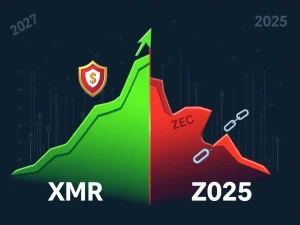Ethereum’s Historic Ascent: Surpassing Traditional Finance Giants in a Pivotal Blockchain Milestone

Have you ever imagined a digital currency network growing so large it overshadows financial titans like HSBC and American Express? Well, that’s precisely what’s happening in the world of cryptocurrency, with Ethereum leading the charge. This isn’t just about a rising price; it’s a profound shift signaling the increasing integration of blockchain technology into the global financial system.
Ethereum’s Monumental Market Cap Achievement
In a groundbreaking development, Ethereum’s market capitalization has officially surpassed the combined valuation of two long-standing global financial institutions: HSBC Holdings PLC and American Express Co. This isn’t just a number; it’s a powerful statement about the evolving landscape of finance.
- A New Financial Scale: Ethereum’s market cap has soared past $1.4 trillion, outperforming HSBC’s $1.1 trillion and American Express’s $380 billion. This places Ethereum squarely among the top global financial players, challenging traditional hierarchies.
- Beyond Speculation: This milestone, first highlighted by Whale Insider and widely discussed across blockchain platforms, underscores Ethereum’s transformation from a speculative asset to a foundational infrastructure. It’s now seen as a utility-driven platform, crucial for decentralized applications (dApps) and smart contracts.
- A Structural Shift: Analysts from firms like OneSafe view this achievement as more than a short-term market fluctuation. It represents a fundamental change in investor priorities, favoring decentralized, transparent systems over centralized legacy models.
The DeFi Revolution: What Drives Ethereum’s Value?
Unlike traditional banks, whose value is tied to lending, deposits, and transaction fees, Ethereum’s value is deeply rooted in its utility as the backbone of decentralized finance (DeFi). So, what exactly makes Ethereum such a compelling investment?
Ethereum powers a vast ecosystem of applications, including:
- Lending Protocols: Platforms where users can lend and borrow crypto assets without intermediaries.
- Decentralized Exchanges (DEXs): Enabling peer-to-peer trading of cryptocurrencies directly on the blockchain.
- Enterprise-Grade Solutions: Businesses are increasingly leveraging Ethereum for supply chain management, digital identity, and tokenization of real-world assets.
Furthermore, Ethereum’s technical advancements have significantly boosted its appeal. Its adoption of an energy-efficient proof-of-stake (PoS) consensus mechanism and the continuous development of scalability-enhancing Layer-2 solutions have made the network more robust, sustainable, and attractive to a broader range of investors and developers.
Unpacking the Implications for Crypto Adoption
This remarkable achievement by Ethereum isn’t happening in a vacuum. It coincides with broader macroeconomic trends and growing institutional interest, further accelerating mainstream crypto adoption.
- Macroeconomic Tailwinds: Discussions on platforms like Reddit suggest that potential central bank rate cuts could fuel crypto demand. Lower borrowing costs might incentivize speculative capital flows into digital assets, aligning with Ethereum’s narrative as a hedge against traditional financial uncertainties.
- Institutional Endorsement: Leading cryptocurrency exchanges like Binance have characterized Ethereum’s milestone as a “huge” step towards mainstream acceptance. They emphasize its critical role in reshaping cross-border payments and building resilient decentralized financial systems. This institutional validation adds significant credibility to the crypto space.
Blockchain’s Challenge to Legacy Finance
Ethereum’s valuation parity with traditional financial powerhouses raises crucial questions about how legacy institutions are adapting to digital competitors. The core of this shift lies in the fundamental difference between centralized and decentralized systems.
While banks like HSBC and American Express have explored crypto-related services – engaging in stablecoin partnerships or piloting blockchain payment trials – their primary operations remain anchored in traditional banking models. Ethereum’s ascent suggests a powerful narrative: blockchain-based systems are increasingly viewed as viable, and in some cases superior, alternatives to centralized networks.
This isn’t necessarily about one replacing the other entirely, but rather a re-calibration of market priorities. Digital assets are no longer fringe investments; they are legitimate contenders for capital in an increasingly digitized financial landscape.
Navigating the Volatile Crypto Landscape
Despite Ethereum’s impressive gains, it’s important to acknowledge the inherent volatility of the broader crypto market. For instance, PandaForecast reported a 2.2% decline in global crypto market capitalization to $3.85 trillion around a separate timeframe. This highlights the sector’s complexity, where individual asset performance can diverge from overall market conditions.
This divergence underscores that while specific projects like Ethereum are achieving significant milestones, the market as a whole remains dynamic and subject to various influences, including regulatory frameworks and macroeconomic shifts. For investors, understanding this nuanced environment is key to making informed decisions.
The Future is Decentralized
Ethereum’s remarkable achievement of surpassing the combined market cap of HSBC and American Express is more than just a financial headline. It’s a clear signal that decentralized finance and blockchain technology are not just here to stay, but are actively reshaping the global financial architecture. As regulatory frameworks evolve and macroeconomic conditions shift, Ethereum’s role as a foundational digital asset will only become more pronounced, paving the way for a future where digital assets are at the forefront of innovation.
Frequently Asked Questions (FAQs)
What is the significance of Ethereum’s market cap surpassing HSBC and American Express?
This milestone signifies a major turning point in the cryptocurrency sector’s integration into global financial systems. It highlights Ethereum’s growing dominance as a foundational infrastructure for decentralized finance (DeFi) and smart contract applications, positioning it as a key player alongside traditional financial institutions.
What factors contribute to Ethereum’s growing value?
Ethereum’s value is primarily underpinned by its utility as the backbone of decentralized applications (dApps), including lending protocols, decentralized exchanges, and enterprise solutions. Its adoption of energy-efficient proof-of-stake (PoS) consensus and scalability-enhancing Layer-2 solutions also contribute significantly to its appeal and value.
How is Ethereum different from traditional financial institutions?
Unlike traditional financial entities like banks, Ethereum is a decentralized, utility-driven platform. Its value comes from powering dApps and smart contracts on a blockchain, offering transparent, peer-to-peer financial services without the need for intermediaries, whereas traditional institutions operate through centralized, legacy banking models.
What role do macroeconomic trends play in Ethereum’s trajectory?
Macroeconomic trends, such as potential central bank rate cuts, can influence crypto demand by reducing borrowing costs and incentivizing speculative capital flows. This aligns with Ethereum’s perception as a potential hedge against traditional financial uncertainties, contributing to its upward trajectory.
How are traditional financial institutions responding to the rise of cryptocurrencies like Ethereum?
Traditional financial institutions like HSBC and American Express have begun experimenting with crypto-related services, such as stablecoin partnerships and blockchain payment trials. However, their core operations remain rooted in legacy banking models, indicating a cautious but growing adaptation to the digital asset landscape.
Is the crypto market stable despite Ethereum’s gains?
While Ethereum has achieved significant gains, the broader crypto market can still experience volatility. Data points like a decline in overall global crypto market capitalization indicate that individual asset performance can diverge from overall market conditions, highlighting the sector’s inherent complexity and dynamic nature.










